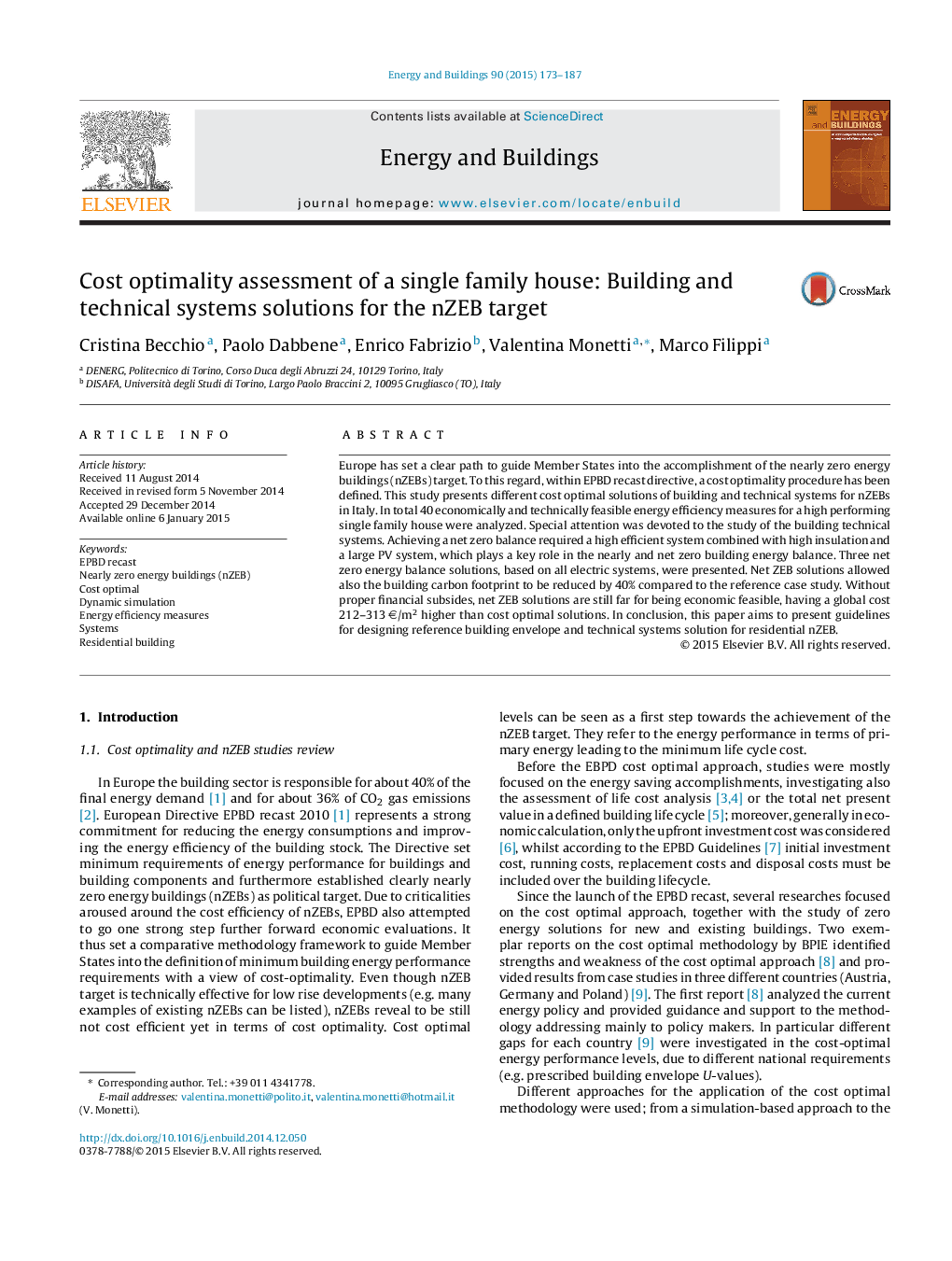| Article ID | Journal | Published Year | Pages | File Type |
|---|---|---|---|---|
| 262616 | Energy and Buildings | 2015 | 15 Pages |
•Cost optimality of system solution for a single family house was investigated.•Three residential system configurations with a net zero energy balance were proposed.•Onsite energy production from renewables is a key element for achieving nZEB goal.•Cost optimal solutions have a small renewable energy ratio (20–30%).•nZEB solutions have higher costs than cost optimal solutions (+300 €/m2).
Europe has set a clear path to guide Member States into the accomplishment of the nearly zero energy buildings (nZEBs) target. To this regard, within EPBD recast directive, a cost optimality procedure has been defined. This study presents different cost optimal solutions of building and technical systems for nZEBs in Italy. In total 40 economically and technically feasible energy efficiency measures for a high performing single family house were analyzed. Special attention was devoted to the study of the building technical systems. Achieving a net zero balance required a high efficient system combined with high insulation and a large PV system, which plays a key role in the nearly and net zero building energy balance. Three net zero energy balance solutions, based on all electric systems, were presented. Net ZEB solutions allowed also the building carbon footprint to be reduced by 40% compared to the reference case study. Without proper financial subsides, net ZEB solutions are still far for being economic feasible, having a global cost 212–313 €/m2 higher than cost optimal solutions. In conclusion, this paper aims to present guidelines for designing reference building envelope and technical systems solution for residential nZEB.
